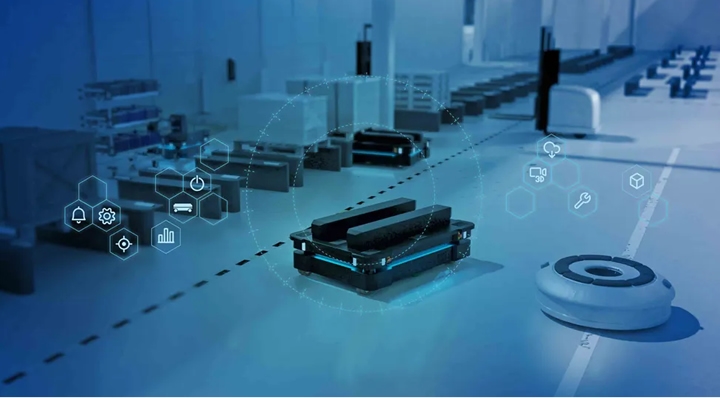The VDA5050 standard is one of the industry’s attempts to address this challenge by standardizing communication between multiple different robot types from various suppliers using a common control system.
 Interoperability, the VDA5050 Standard and MiR’s approach
Interoperability, the VDA5050 Standard and MiR’s approach

News from | Mobile Industrial Robots Inc. MiR
Understanding Interoperability
Across industries, manufacturers and warehouse service providers are constantly seeking to optimize processes in response to challenges like labor shortages, increasing competition, and the need for agile production and fast deliveries. Autonomous Mobile Robots (AMRs) have emerged as an efficient solution for automating internal transportation tasks worldwide. As mobile automation solutions gain adoption, a wider range of use cases requiring different robot types have emerged for manufacturers, warehouses, and distribution facilities. These needs range from general AMRs to specialized vehicles like forklifts and high-reach trucks, all aiming to enhance the speed and accuracy of receiving, storing, moving, and shipping items.
Given this wide range of solutions required to address all material movement workflows, several different automation solutions from different vendors are likely to have to operate in the same space, each with unique operating standards and control systems. This diversity can lead to complex traffic situations and create challenges for users who desire a unified control and support mechanism for their entire fleet of automated vehicles. Therefore, efficient interoperability of these automation solutions is becoming increasingly important, sometimes requiring a central management system to communicate and coordinate with different vendor products using a single control source and interface. Such interoperability solutions can simplify the operation of mixed-brand fleets and lower barriers to further mobile robot adoption.
What is VDA5050?
Initiated by the German Automotive Industry Association (VDA) and the VDMA Material Handling and Intralogistics Association, the VDA5050 standard is one of the industry’s attempts to address this challenge by standardizing communication between multiple different robot types from various suppliers using a common control system. This standard is developed for efficient traffic management and coordinated operations using different automated vehicles within a given facility. VDA5050 requires robots to meet certain requirements that enable them to be included within a third party control system.
While there is clear benefit to coordinated control systems, there is a general conversation in the industry that standardized interoperability solutions risk inhibiting many value-adding features and functions that are dependent on the vendor’s unique knowledge of their own robotic solution. For this reason, solutions that adopt the most beneficial elements of a standard’s interoperability functions without limiting the value the robot manufacturer can deliver are a very important balance for the industry to maintain as the adoption of interoperability standards such as VDA5050 becomes more widespread.
MiR’s Approach to VDA5050 now and Future Plans
MiR completely acknowledges the need for interoperability between different mobile automation platforms. Currently, MiR offers an open API interface that already enables integration with third-party solutions. Several of MiR’s partners have already adapted our open interface to include MiR robots in VDA-compatible solutions.
In addition to the partners who have already developed VDA integrations, MiR plans to further extend our compatibility with VDA5050 by implementing a ‘starter kit’ open adapter that bridges the existing REST API with the MQTT protocols required by the VDA5050 standard. This approach will simplify the integration effort by translating REST API requests into VDA5050-compliant MQTT messages, facilitating VDA message exchange between AMRs and third-party systems. We are partnering with several third-party fleet vendors as we work to complete this adapter which we plan to make available to the general market toward the end of this year.
The content & opinions in this article are the author’s and do not necessarily represent the views of RoboticsTomorrow
Comments (0)
This post does not have any comments. Be the first to leave a comment below.
Featured Product

